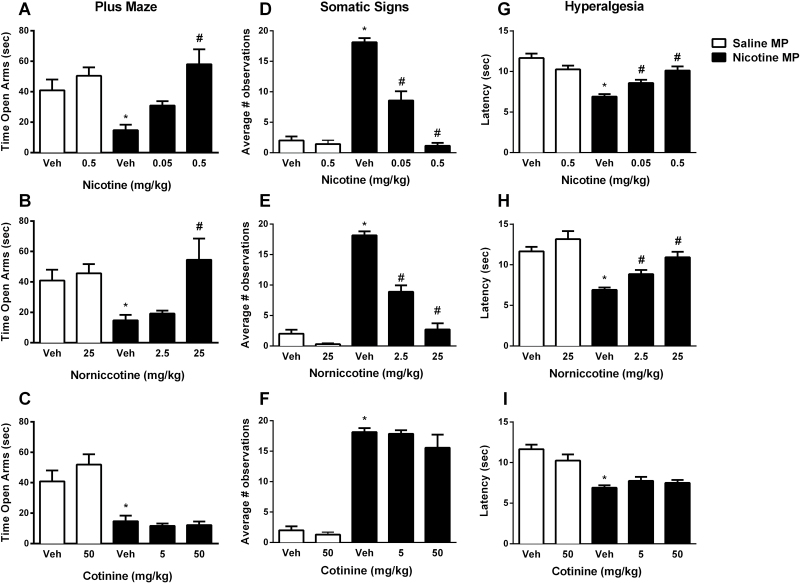Figure 1.
Effects of nicotine and nicotine metabolites on anxiety-like withdrawal signs in the mouse. Male ICR mice were chronically infused with saline or nicotine (24 mg/kg/day) for 14 days. After mini pumps removal, mice received nicotine (0.05 mg/kg, s.c.) or their respective vehicles. Ten minutes later, (A, B, and C) anxiety-like behaviors (Time spent in the open arm), (D, E, and F) somatic signs, and (G, H, and I) hyperalgesia (latency time) were measured. For statistical analysis, at first, the highest doses of nicotine, nornicotine and cotinine used in this study were compared with their vehicles in chronic saline exposed mice using simple t test to assess the responses after their acute injections. Secondly, to test whether chronic nicotine exposure induced withdrawal symptoms as seen in anxiety-like behaviors, somatic signs, and hyperalgesia, simple t test was used between acute vehicle treated saline and nicotine minipump groups. Finally, possible alleviation of withdrawal signs by nicotine, nornicotine or cotinine treatments was tested using ordinary one-way analysis of variance, followed by the Tukey post hoc correction. Data are presented as the mean ± SEM of 7 animals. *Denotes p < .05 vs. Vehicle treatment in saline minipump group, #Denotes p < .05 vs. Vehicle treatment in nicotine minipump group. MP = Minipumps; Veh = Vehicle.

